I’ve traditionally been taught to keep pesky weeds such as clover off my lawn, but I’ve recently been appreciating the once vexing-clovers.
However, even though this dense ground cover is a hassle-free, eco-friendly option for landscaping, it does have a few disadvantages that may make you want to avoid a clover lawn.
What is a Clover Lawn?
Also known as Dutch clover or Dutch white clover, white clover (Trifolium repens) just as the name would suggest has small white flowers and an abundance of broad, shamrock leaves that cover the ground similar to how grass does.
Until the 1950s, clover was hailed as the standard of excellence in lawn care but fell out of favor when people started using broadleaf herbicides to kill harmful weeds including clover and dandelions.
But in recent years clover is making a comeback as a beneficial lawn, partly because:
- It doesn’t require any chemicals or fertilizers. In fact, broadleaf herbicides will kill white clover flowers and the plant itself.
- It releases nitrogen to nearby plants. Clover is technically a legume, meaning it absorbs nitrogen from the air and converts it to a plant-available form, helping your green lawn stay green.
- It is drought tolerant and spreads via underground stems called rhizomes, so clover blossoms easily throughout your lawn.
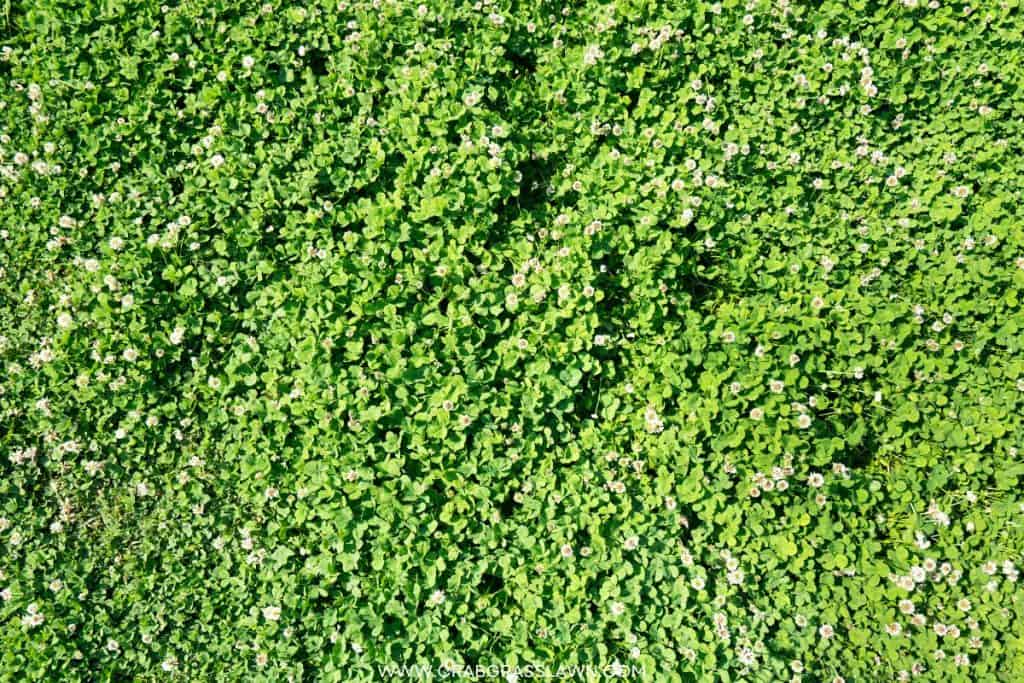
Dutch White Clover vs Microclover
There are several varieties of clover but the 2 most commonly used for lawns are:
- Dutch white clover
- Microclover
The microclover variety has smaller leaves, and fewer flowers, and showcases a lower growth habit compared to Dutch white clover. It has been a popular lawn option in Europe for decades and is also gaining steam in the United States.
Regular Dutch clover has bigger leaves, and some leaves can be the size of an adult fingernail or larger.
Even though regular Dutch clover and microclover are essentially the same plants, produce small white flowers and have three leaves (unless you’re lucky enough to find plants with four leaves), and are nitrogen fixers, microclover is the more acceptable choice for ground cover because it tolerates lower mowing heights and can be incorporated into almost any existing lawn care practice.
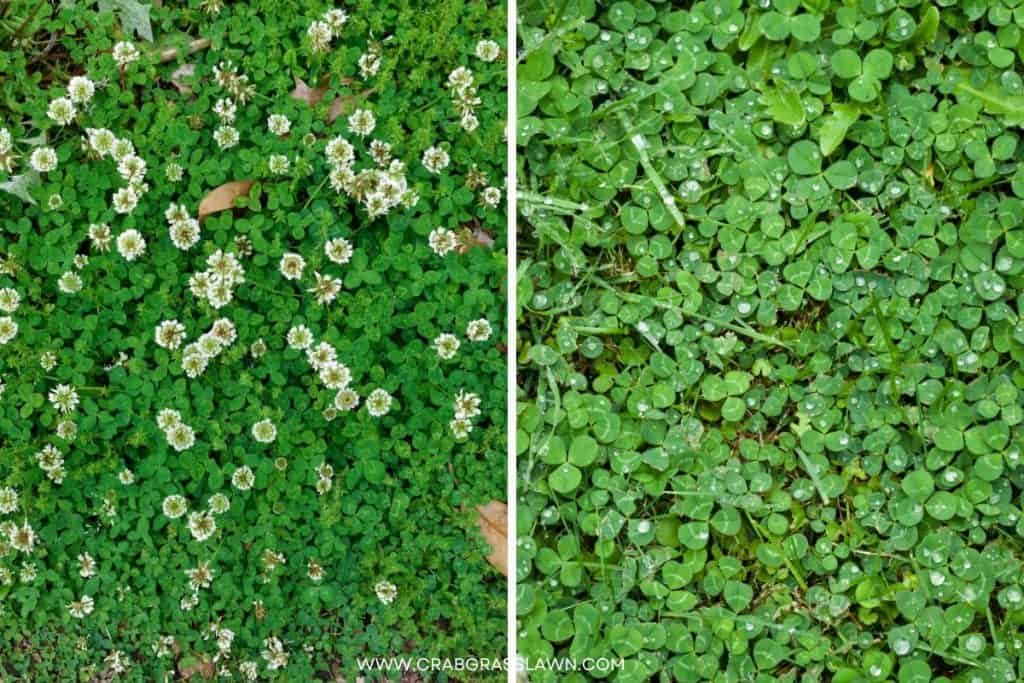
8 Reasons to Avoid a Clover Lawn
1. Struggles in High Traffic Areas
Clover isn’t a good option for high-traffic areas unless it’s mixed with turfgrasses. However, new microclover varieties developed in the last few decades are more resilient to heavy foot traffic.
You only need to mix 5 percent to 10 percent of clover seeds with the recommended types of grass seeds to create a thick stand.
It’s important to spread these two types of seeds separately because clover seeds are small and dense and will clump together at the bottom of the spreader, resulting in uneven coverage.
2. Clover Produces Seeds Aggressively
Clover usually produces seeds aggressively and in large numbers. These seeds can end up on your flower beds and paving stones, which increases the need for frequent lawn edging.
3. Clover Stains Clothing
Clover stains clothing more than turf, and I’m not sure about the science behind it. So, if you like sitting on your lawn or if your kids enjoy rolling around on your lawn, you’ll have to stock up on some stain remover.
Applying a pre-wash stain remover before putting your clothing in the washing machine should get rid of the green stains. But again this is an inconvenience that most people aren’t aware of when it comes to clover lawns.
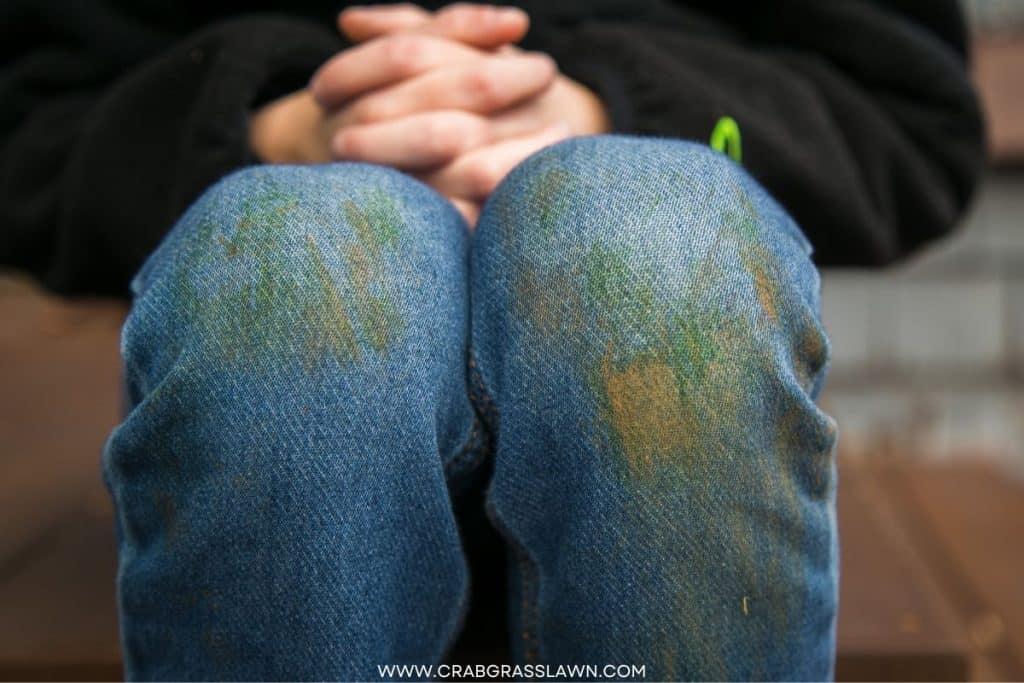
4. Looks Bumpy and Uneven
If you’re trying to achieve an award-worthy look or if you’re a perfectionist, clover isn’t the best option for you. Clover provides an uneven look even when grown from clover seed and not even as lawns grown from turfgrass seeds.
Due to its accelerated growth, some areas will grow faster than others, contributing to an uneven look. Although clover doesn’t require frequent mowing like grass, fresh clover will soon shoot up when you mow to flatten out the bumps.
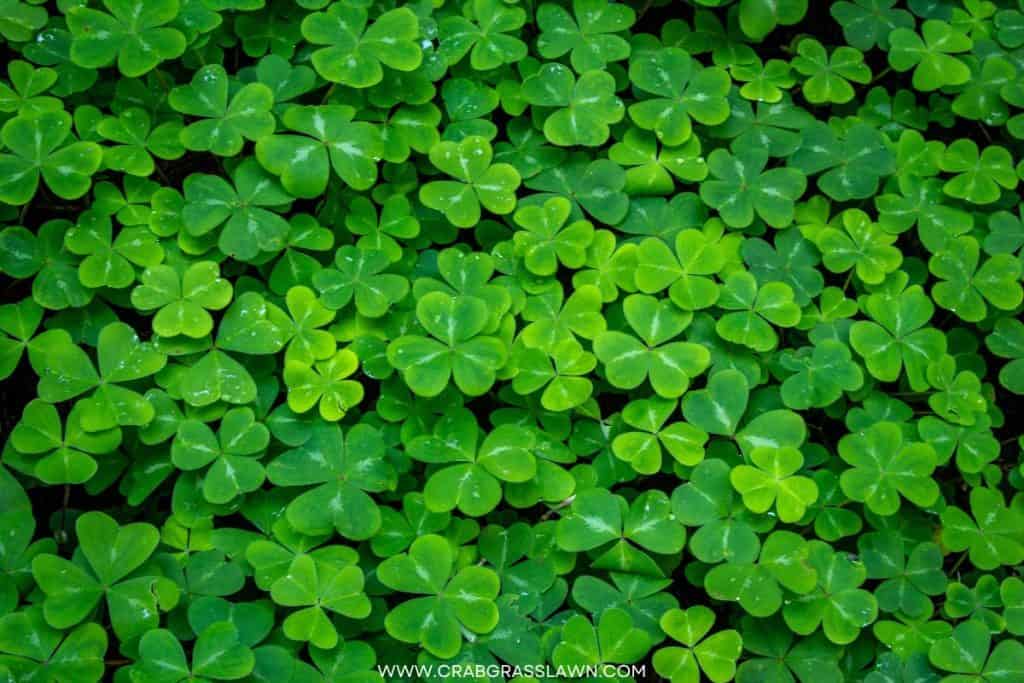
5. Attracts Bees
Attracting bees and other pollinators can be good for your lawn but not if you are allergic or scared of bees. If you have kids and pets, the last thing you want is for them to get stung by bees and wasps.
6. Striping Your Lawn is Not an Option
Clover offers several benefits such as:
- It grows in many types of soil
- Doesn’t require large amounts of water
- Susceptible to pests
But if you fancy stripes on your lawn, you’ll have to ditch the clover option.
Lawn stripes refer to checkerboards or other patterns applied to a vast stretch of lawn with a lawn mower.
To stripe your lawn, the grass must be free from diseases and must be mowed entirely to an even height, but clover and grass do not grow at the same pace and height, so cutting the lawn at the same height may be challenging.
7. Clover Requires Periodic Reseeding
Clover is a short-lived perennial that can grow in full shade and partial shade but may require a new round of seeding from time to time, typically every 2 – 3 years. However, in clover-grass lawns, clover generally reseeds itself and doesn’t need any additional help.
8. White Clover Flowers Can Be an Eyesore
For those who love a rich, green lawn, the white clover flowers can be an eyesore.

If you want a perfect lawn, a clover solution isn’t a good idea, you’ll have to consider other alternatives.
You may want to consider clover as part of your existing lawn. However, is clover good for your lawn? Follow the link to see my detailed guide on the benefit of clover for your existing lawn.
3 Alternatives to Clover Lawn
I’ve provided you with 8 solid reasons to avoid a clover lawn, but let’s take a look at some alternative lawn popular choices.
1. Creeping Thyme
A creeping thyme lawn doesn’t require regular fertilizing and is drought tolerant, similar to clover plants. But one of the additional benefits of a creeping thyme lawn compared to a clover lawn is that it can be walked upon, making it a great choice for lawns that receive heavy foot traffic.
The fertilizer required for creeping thyme depends on the soil it is planted in. The soil quality of poor soil should be improved before planting creeping thyme.
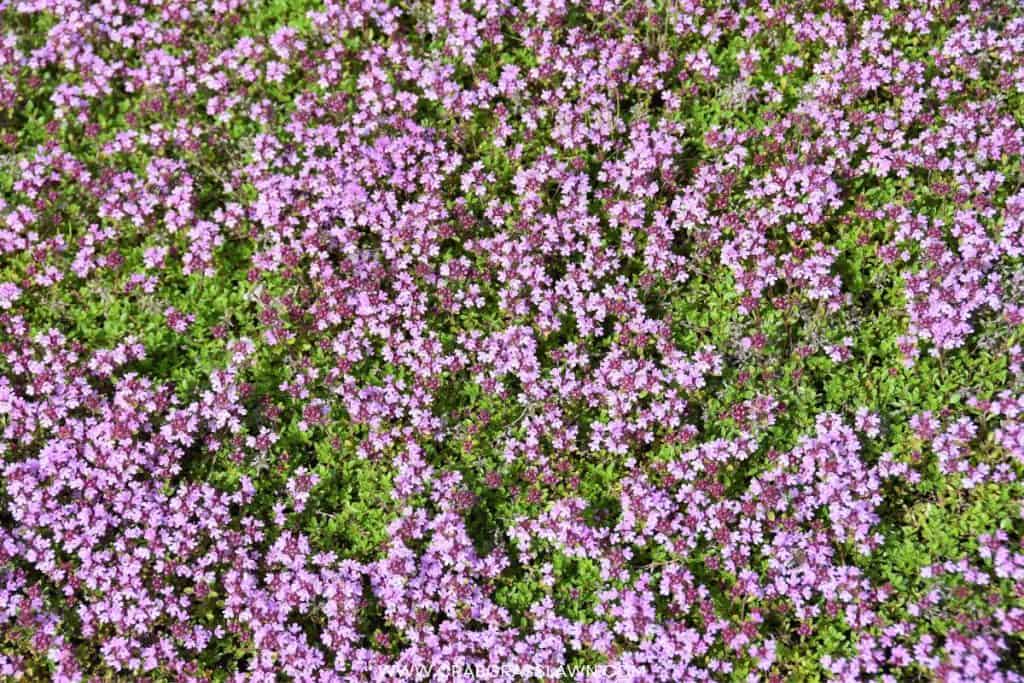
2. Dwarf Chamomile
When I think of chamomile, the first thing that comes to mind is soothing, rejuvenating, chamomile tea, but surprisingly some varieties of chamomile make an excellent lawn alternative.
Similar to clover lawns, chamomile doesn’t require regular fertilizing with natural fertilizer, and synthetic fertilizers, mowing, or edging and is ideal for areas where foot traffic is minimal.
Unlike certain grass seed mixes or clover mixes, chamomile plants thrive in full sun and in loamy soil but not heavy clay quality soil.
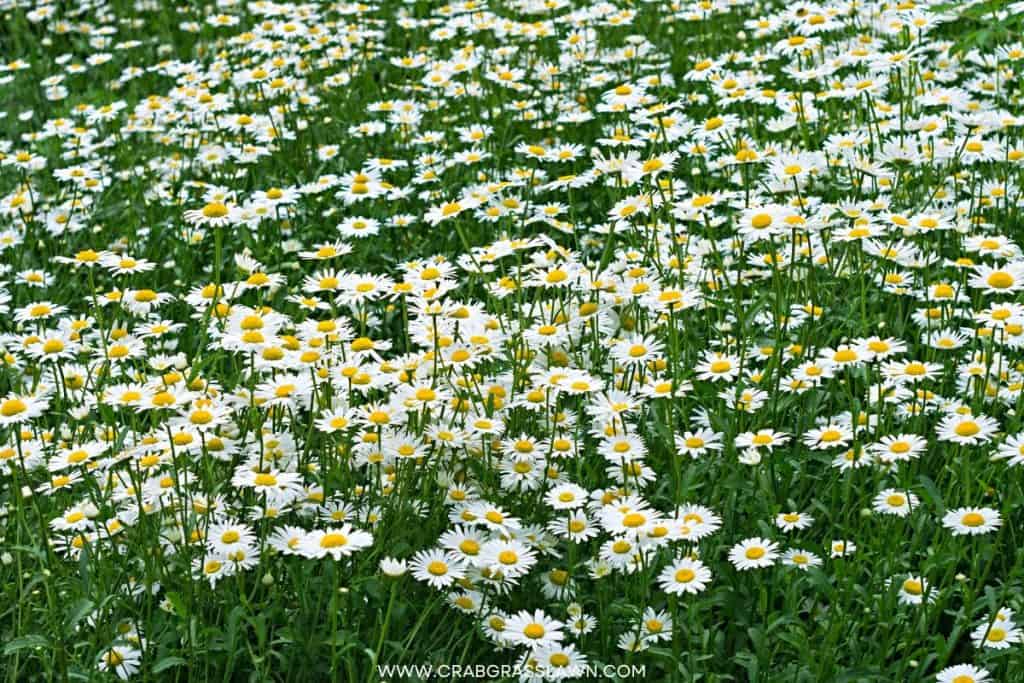
3. Green Carpet Rupturewort
Green carpet rupturewort comes highly recommended by lawn care professionals as a great alternative to a lawn with clover and a regular lawn owing mostly for its bright green leaves that turn bronze during the winter months.
It can withstand a fair amount of traffic and is soft enough to walk on bare feet.
Commonly referred to as herniaria, green carpet does produce flowers just like clover-based lawns with clover roots but these flowers are so small that you may not notice them.
You can grow a herniaria lawn from scratch and enjoy a healthy lawn that is low maintenance and can tolerate fair amounts of foot traffic.
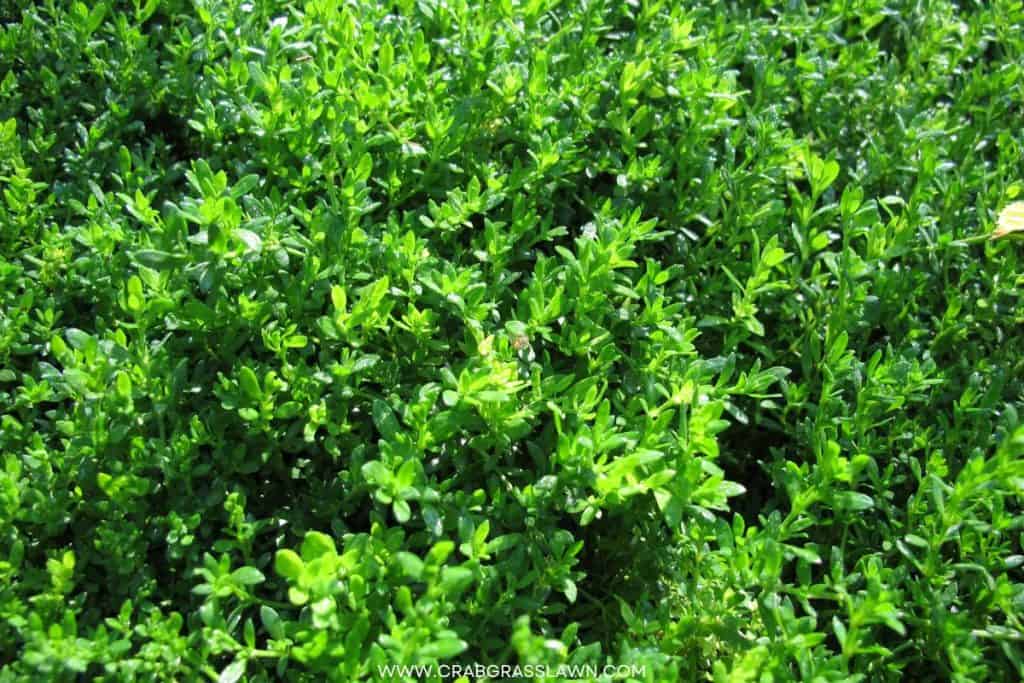
Here’s an informative video on why clover lawn isn’t for everyone:
Final Thoughts
If you desire a lush, green lawn, there are several reasons to choose clover over a grass lawn, but this dense ground cover plant does have a few downsides.
Even though a clover lawn doesn’t require regular watering like a traditional grass lawn or like other plants in your garden, it can’t withstand heavy foot traffic and does attract pollinators such as bees.
Hi, Alex Kuritz here. Growing up I remember that my family had one of the best lawns in the neighborhood. Richly green and lush. I did a lot as I grew up in terms of caring and tending for not only my family’s lawn but also my neighbors. I can say I have years of experience, and I am here to share it with you.


